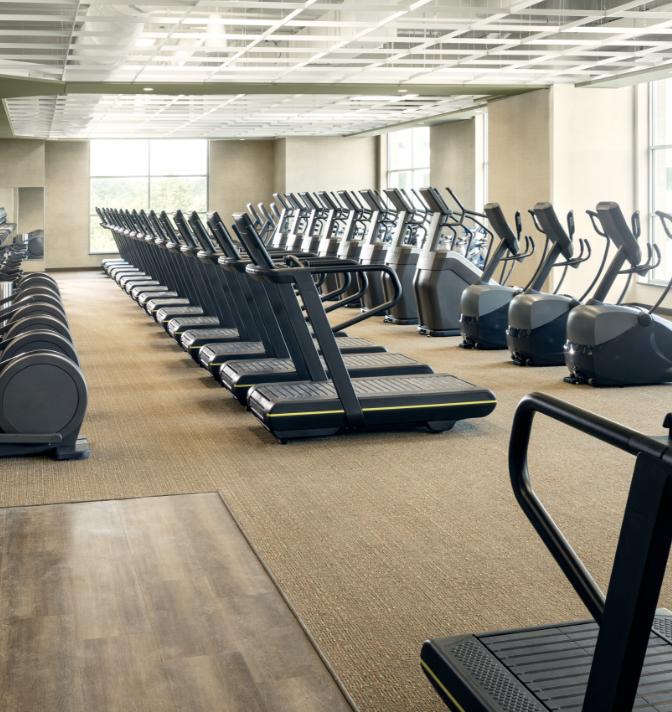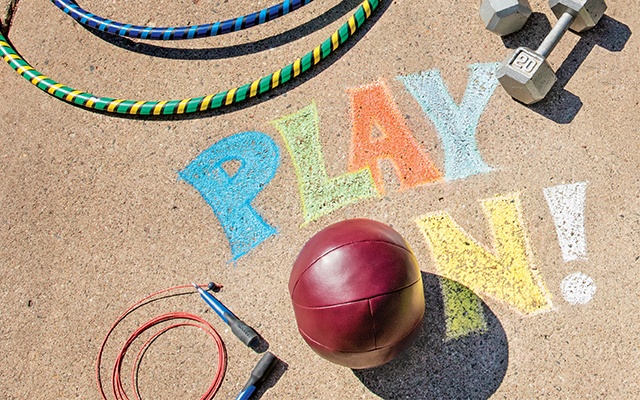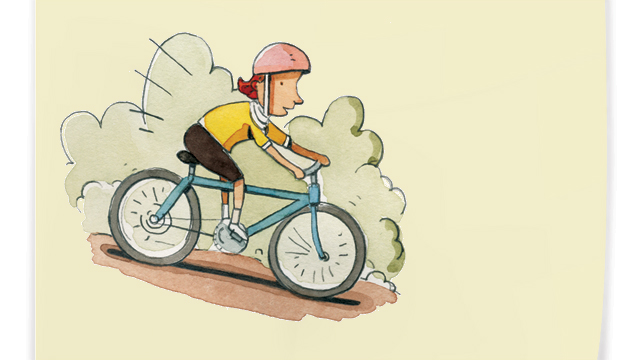Understanding the nature of your personality comes in handy for landing the perfect job or fine-tuning your communication skills with your partner. But did you ever consider the role your personality type plays in determining your fitness tastes?
Think about it: Would you prefer swimming laps solo over attending a rowdy group-cycling class? Would you rather take a samba class or an uphill nature walk, or put in 45 minutes on a treadmill? Do you feel better about exercising with a fitness buddy or going it alone? Your answers to these questions probably have less to do with your physical characteristics than they do with how you’re wired — socially, emotionally and psychologically.
“Understanding these nuances and tailoring your fitness regimen accordingly give you a major head start on the path to success,” says Suzanne Brue, MS, a longtime Myers-Briggs practitioner and author of The 8 Colors of Fitness.
This may sound like the equivalent of a fitness horoscope to you — potentially more fun than functional — but matching activities to personality type has been shown to have real-world relevance, even for those cynical about the whole personality-typing concept.
“Research suggests that people who engage in personality-appropriate activities will stick with the activities longer, enjoy their workout more and ultimately have a greater overall fitness experience,” says Susan Davis-Ali, PhD, a researcher who developed a fitness interest profile test for Life Time Fitness.
Plus, discovering your fitness personality can save you time and trouble, Davis-Ali adds, because you can proceed directly toward activities you’re likely to find rewarding and avoid false starts with fitness fads that just aren’t for you. (For more on maximizing fitness enjoyment, see “Welcome to the Fitness Revolution”.)
Though not the first to dig into the topic of fitness and personality, Brue is the first to create a system based on the principles of the Myers-Briggs Type Indicator (MBTI) assessment. Brue took the MBTIs — Introversion (I) or Extraversion (E), Intuition (N) or Sensing (S), Thinking (T) or Feeling (F), and Judging (J) or Perceiving (P) — and reworked them into an easily maneuverable color-coded fitness personality model.
Get to Know Yourself
If you’ve ever taken an MBTI assessment and you remember your resulting four-letter type, you can skip to the type-associated descriptions on the following pages. If not, you can get quick results by using Brue’s online color-coded fitness assessment at www.the8colorsoffitness.com.
A little background: The MBTI investigates whether you’re an extrovert (drawing more energy from the outside world) or an introvert (getting energized from within); whether you process information through intuition (trusting flashes of insight) or through sensing (seeking out hard facts and sensory data); whether you’re a thinker (meaning you tend to be more detached and analytical in decision-making) or a feeler (meaning you tend to be more personal and empathic when making up your mind); and whether you lean toward judging (indicated by a desire for defined decisions and closure) or perceiving (denoting those who prefer to keep their options open longer). Often people recognize their type when they hear it described, Brue notes, so even reading the descriptions of the personality categories can help you identify yours.
You may have noticed there are 16 possible MBTI combinations, yet only eight fitness colors. Brue says she was able to combine certain types because exercise preferences are strongly aligned with Sensing (S) or Intuition (N) traits. Since exercise is an ongoing process, it’s most important for each color to share the preference for how new information is interpreted.
Brue further classifies each fitness color by referring to Thinker types (Ts) as “Efficiencies,” based on their pragmatic approach to exercise, and Feeler types (Fs) as “Harmonies,” based on their emphasis on personal connection. Because Thinkers and Feelers may share a color and prefer many of the same activities, their execution of those exercise routines will likely be very different. (For a more in-depth look at the difference between Efficiencies and Harmonies, consult Brue’s book.)
For example, on the Myers-Briggs scale, Brue comes out an ENFJ, meaning she has preferences for Extraversion, Intuition, Feeling and Judging. In her own typing system, that makes her a self-assured Purple of the “Harmony” sort — meaning she thrives with an organized, familiar routine where she can exercise alongside people but not have to socialize with them.
That fitness prescription pretty much fits the bill for Brue: “I was lucky to find lap swimming over 20 years ago,” she says, “and I’ve been exercising consistently ever since.”
To help you get to know your fitness type, we’ve outlined each of the eight fitness colors below. Read the descriptions, take Brue’s 8 Colors quiz online and try out some activities that best suit your personality. “You might even discover you are well suited for a sport that you never even thought of trying,” says Davis-Ali.
- Blues are safety-conscious, and good at creating their own space and concentrating in a gym.
- Golds are traditional, conservative, and like to share their exercise experiences and results with others.
- Greens are nature lovers who enjoy outdoor activities.
- Reds like to live in the moment and compete in team sports.
- Whites prefer to plan, hate to be rushed and are visionary types who enjoy calm spaces.
- Saffrons like to express themselves as individuals and are attracted to spontaneous, engaging activities.
- Purples are routine-oriented and enjoy repetition.
- Silvers like exercise to be disguised as fun.
True Blue – Tried and True
Blues (ISTJ, ISFJ) are loyal, traditional, dependable and straightforward. They are committed and conscientious, especially about safety and consistency. “You’ll see Blues habitually using the same gym equipment all the time,” notes Brue. “They like to monitor their heart rate and keep track of their progress.” They also like to create their own space and are likely to read books or magazines while on a treadmill.
Motivation: Blues will benefit from keeping a training log or wearing a pedometer or heart-rate monitor. They like familiarity and cleanliness and will prefer an exercise space or gym that is organized, safe, predictable and clean.
Suggested Activities: Rowing, running, walking, yoga, interval training.
Gold Standard – Just the Facts
Golds (ESTJ, ESFJ) are traditional and conservative. They trust the suggestions of authority figures such as doctors, fitness instructors or personal trainers. They rely on proven methods to achieve the results they desire. “It’s especially important to Golds to work out in a friendly, positive environment,” Brue says. They get attached to certain classes and teachers they like and may quit a class if their favorite instructor leaves. Golds also value precision. They want to be sure that they’re executing correct form at all times.
Motivation: Golds will benefit from setting clear, specific goals and from having good, accessible fitness role models. They should make a point of telling others about their results and successes. “Be careful in large group classes,” Brue warns, “since your desire to interact with others might detract from your workout.”
Suggested Activities: Swimming, Pilates, yoga, tennis, one-on-one personal training, hiking (with a goal, such as reaching all the highest peaks in your region).
Roaring Red – Now!
Reds (ESTP, ESFP) are quick responders with high energy. They like to be where the action is, living in the moment. “Reds never zone out and disengage during a workout,” Brue says. You won’t see them reading a book or watching TV while on a treadmill. In fact, you’ll rarely see them on treadmills at all, she says — because Reds find them boring.
Motivation: Friendly competition is a great motivator for Reds. Pickup basketball games, beach volleyball, mountain-bike rides with pals — these are the activities that sound fun to them — and fun is essential. If you’re a Red, stock your trunk with equipment to keep exercise an exciting, entertaining and easily accessible part of each day.
Suggested Activities: Basketball, tennis, racquetball, in-line skating, Frisbee, mountain biking, soccer, skiing.
Going Green – Nature Beckons
For Greens (ISTP, ISFP), the desire to be outdoors overrides all other motivations to exercise. They prefer to be alone and are in tune to all the vivid details of the natural world. “Greens are great navigators,” Brue says. You won’t see them in gyms very often unless they’re working toward a specific goal, such as training for a mountain climb or backpacking trip. In doing her research, Brue met a few Greens who trained on a stairclimber while wearing a weighted backpack to more closely replicate their climbing experiences.
Motivation: Greens should look for appealing outdoor challenges and keep time open in their schedules for adventure. Set a goal — say, a mountain peak or charity bike ride — put it on your calendar, and begin training for it. Consider joining a local outdoor club that takes regular trips in your region.
Suggested Activities: Hiking, orienteering, backpacking, mountain or road cycling, kayaking, rock climbing, windsurfing.
Quick Silver – Fluid and Flexible
Silvers (ENTP, ENFP) are energized by new ideas and possibilities. They readily embrace novel concepts and opportunities. Group-fitness instructors are often Silvers, Brue observes. Music and a fun atmosphere often energize them. But if something interrupts their flow, they can get distracted and look for something more interesting.
Motivation: Silvers do best with convenient workouts that maintain constant momentum and demand constant focus. Weight training, with its starts and stops and weight changes, may prove distracting. “If you’ve planned to attend a noon yoga class, don’t check your email one last time before you walk out the door — you’re too likely to get thrown off track and skip the workout entirely,” Brue advises. Another suggestion: Show up at the gym in your workout clothes, ready to go.
Suggested Activities: Tai chi, bicycling or jogging with a group, Zumba, Nia, yoga, group-cycling classes, ChiRunning, Nordic skiing.
Saffron – Making Workouts Into Play
Saffrons (INTP, INFP) strive for clarity, vision and truth in all that they do. They’re represented by a burnt orange hue that commands attention in a warm, comfortable way, without glitz or extravagance. Saffrons are bored easily and struggle with motivation if they aren’t in the mood for something. They enjoy being around like-minded people.
Motivation: Music and location are huge motivators for Saffrons. They go for classes that sound challenging, and it’s important to them to find fitness instructors whose personalities appeal to them. If you’re a Saffron, consider seeking out multiple workout environments (fitness clubs, cycling studios, dance studios). Ideally, find a few options near home and near work so it’s easy to work out whenever the mood strikes. When you’re on a cardio machine, listen to favorite tunes and cover up the display so you don’t see your results until the end — watching the miles and calories slowly tick away can take the fun out of your routine
Suggested Activities: Music-filled classes such as group cycling, Body & Soul, Zumba, Nia, yoga, dancing (salsa, belly, ballroom, jazz, folk — whatever appeals).
White Canvas – Visionaries
Whites (INTJ, INFJ) have a connection to their subconscious that yields an endless stream of ideas and abstractions. They’re a blank canvas, receptive and creative. “Whites like to zone out and let their minds wander,” Brue says. They’re independent and crave familiarity and routine in their workouts so they don’t have to think too hard about what their bodies are doing. They often find it hard to adjust to unexpected changes.
Motivation: Whites are best off hitting the gym during off-peak hours so that they can have space to relax and zone out without talking to people. Tuning in to a custom MP3 playlist or TV screen can help free your mind. You’re best off avoiding personal trainers or classes that require intense verbal instruction or interaction because you may feel jarred by interruptions.
Suggested Activities: Hiking, running, yoga, cardio, strength training alone at the gym.
Royal Purple – Pursuers With a Plan
Purples (ENTJ, ENFJ) are outgoing and confident, and although they’re extroverted, they often thrive when they keep interaction to a minimum during workouts or limit it to a regular workout buddy. They always have a plan and aren’t easily deterred from their goals. “They can walk into an unfamiliar gym and easily figure out what they need to do,” Brue notes. But their routines can get stale over time without their noticing, and they need help bumping up the intensity to achieve their goals.
Motivation: Purples like uncomplicated routines that are easy to replicate, such as 20 minutes of cardio followed by 20 minutes of strength training. To avoid plateaus and overuse injuries, try new machines and train a variety of muscle groups each workout. Map out what you plan to do ahead of time so you feel confident and focused. Occasionally bump up the incline or speed, or hire a trainer to push you further. If you have the space, set up a home gym or workout area so you can exercise more frequently. (Try this month-long program designed to help you feel powerful, confident, and grounded.)
Suggested Activities: Lap swimming, cardio and strength training, running, cycling.
As fitness-personality typing catches on, both Brue and Davis-Ali expect that gyms nationwide will include it as part of their fitness evaluations and personal training. They predict it will become as important as checking body composition and heart rate. But unlike more scientific measures of success, fitness-personality evaluations are closely linked to enjoyment. And isn’t that what exercise should really be about?
This article has been updated. It was originally published in the November 2008 issue of Experience Life.






This Post Has 5 Comments
That was a lot of text without telling me anything. Worthless.
I am a rainbow so what does that mean
Saffron (INTP-T) = Surfing!!!
I like the typologies. They helped me tune in better as to why I might like certain types of activities. I did fall into some unexpected categories though.
The Meyers Briggs test is pseudoscience akin to astrology. Using it as a criteria demonstrates the unserious nature of this “quiz.”